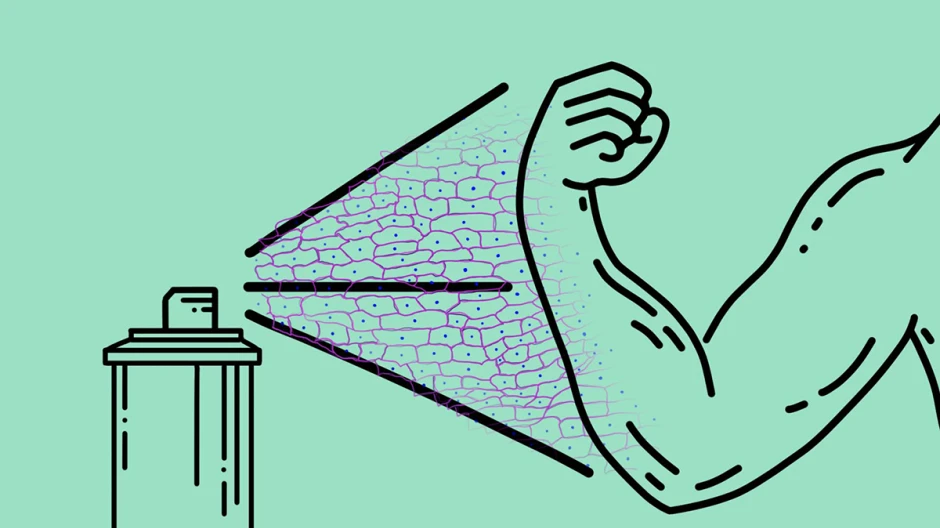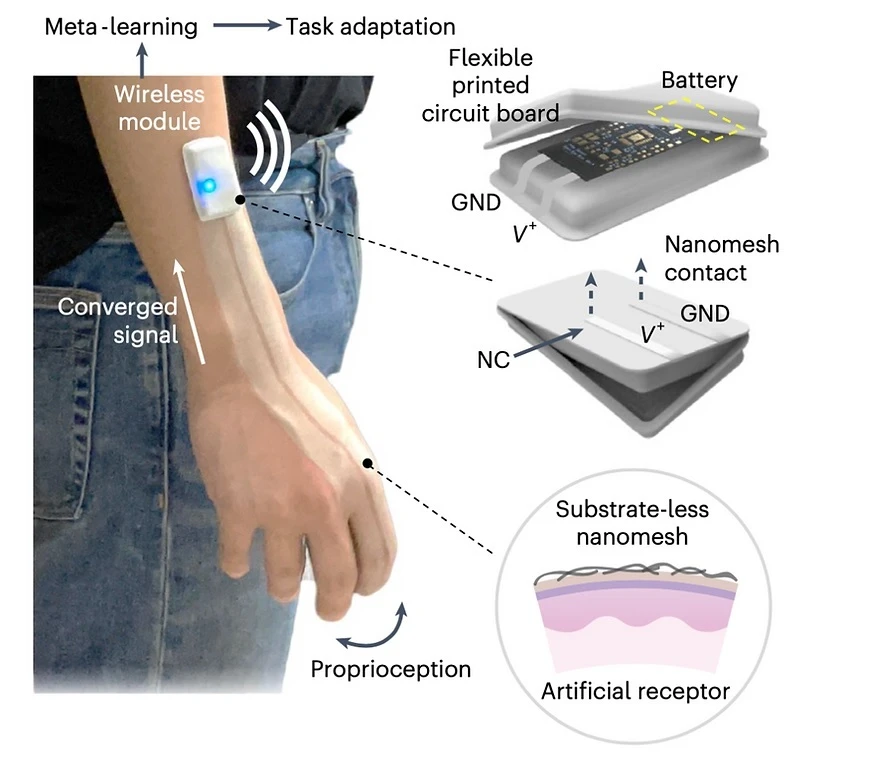Spray-on Smart Skin Allows You to Type With Virtual Keyboards

Many smartphone users would prefer to utilize a virtual QWERTY keyboard that could be presented as a hologram on a table in front of them instead of the confined QWERTY keyboard that comes with their device.
These virtual keyboards might be bigger than a desktop computer’s QWERTY, providing users more room to type. This would enable smartphone users to type text input more quickly and accurately.
Or let’s say you want to utilize your phone to play a mobile game without any controls or even touching it. Even though your hands would be flying in the air like an orchestra director, onlookers would be in awe until they realized what you were doing. You’d be able to navigate through your apps doing the same thing.
You can utilize a virtual keyboard in place of your phone’s QWERTY by applying smart skin.
Stanford University researchers have reportedly been working on a smart skin that will use artificial intelligence (AI) to decipher a person’s actions, according to NatureElectronics (via TheDailyBeast). Like shaving cream, this intelligent skin can be sprayed from a can. The “nanomesh” spray is a stretchable mesh-like substance that can move and bend with your skin. It makes use of minute electrical sensors to track your movements and transmit them to an NPU (neuro processing unit) for analysis. The technology learns each user’s unique hand gestures for interacting with the smart skin through machine learning.
Millions of nanowires coated in gold and silver make up the delicate mesh network, which is embedded in polyurethane. Until the skin is scrubbed with soap and water, the mesh remains on the surface. Additionally, it adapts to the folds and wrinkles that each finger has. The mesh is equipped with a portable Bluetooth transmitter that enables the transmission of signal modifications.
Senior author of the work and Stanford professor of chemical engineering Zhenan Bao said, “The nanowires in the mesh are compressed and stretched apart when the fingers flex and twist, altering the mesh’s electrical conductivity. We can monitor and examine these changes to determine precisely how a hand, finger, or joint is moving.”
With soap and water, the wise skin is removed.
Richard Kyun Kyun Kim, a post-doctoral researcher in Bao’s group and the study’s first author, said, “We introduced the’meta-learning’ components of human learning, which enable quick task adaptation after only a few trials. As a result, the gadget can quickly identify brand-new hand duties and users after a few brief attempts.” Furthermore, because our nanomesh catches fine details in its signals, Kim continued, “It’s a very simple approach to this hard challenge that implies we can accomplish faster computational processing time with less data.”

Future applications of this technology expand beyond mobile devices, apps, and video games. Surgeons would be able to manage a robot surgeon in an operating room thousands of kilometers distant by spraying the smart skin on their arms. The skin can also be used to contact an object and learn all there is to know about it. This function was compared to a “wearable Google Lens” by The Daily Beast, which is a good comparison.

Let’s examine the virtual QWERTY’s operation. Based on the electrical conductivity patterns, a machine learning algorithm may learn the motion required to type the character “X” on a keyboard. The actual keyboard is no longer required once the algorithm has been “trained” to recognize the algorithm for all letters, numbers, punctuation, etc. And this will make it possible to type on virtual keyboards that may be simpler and more accurate to use than the QWERTY on your phone.







